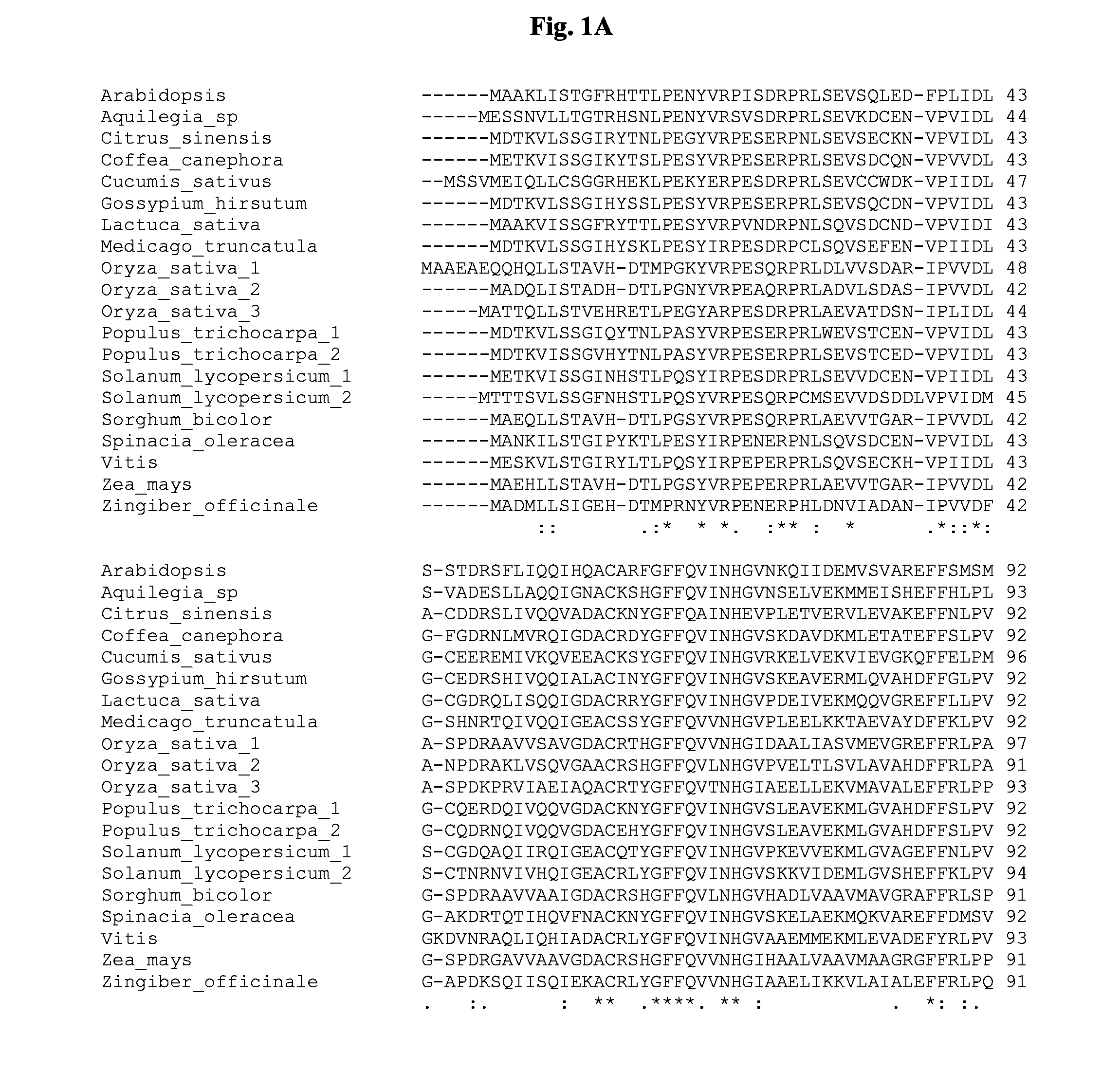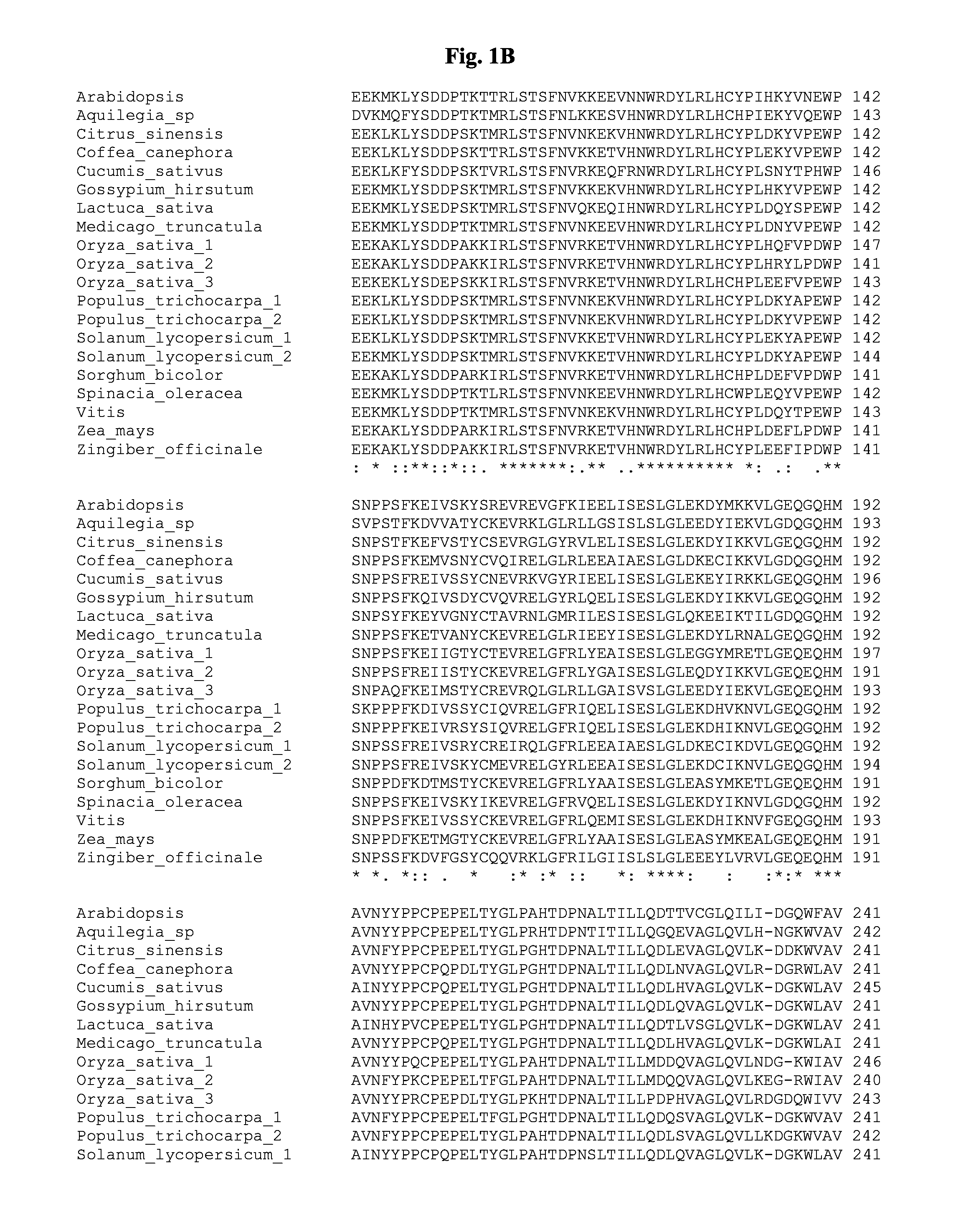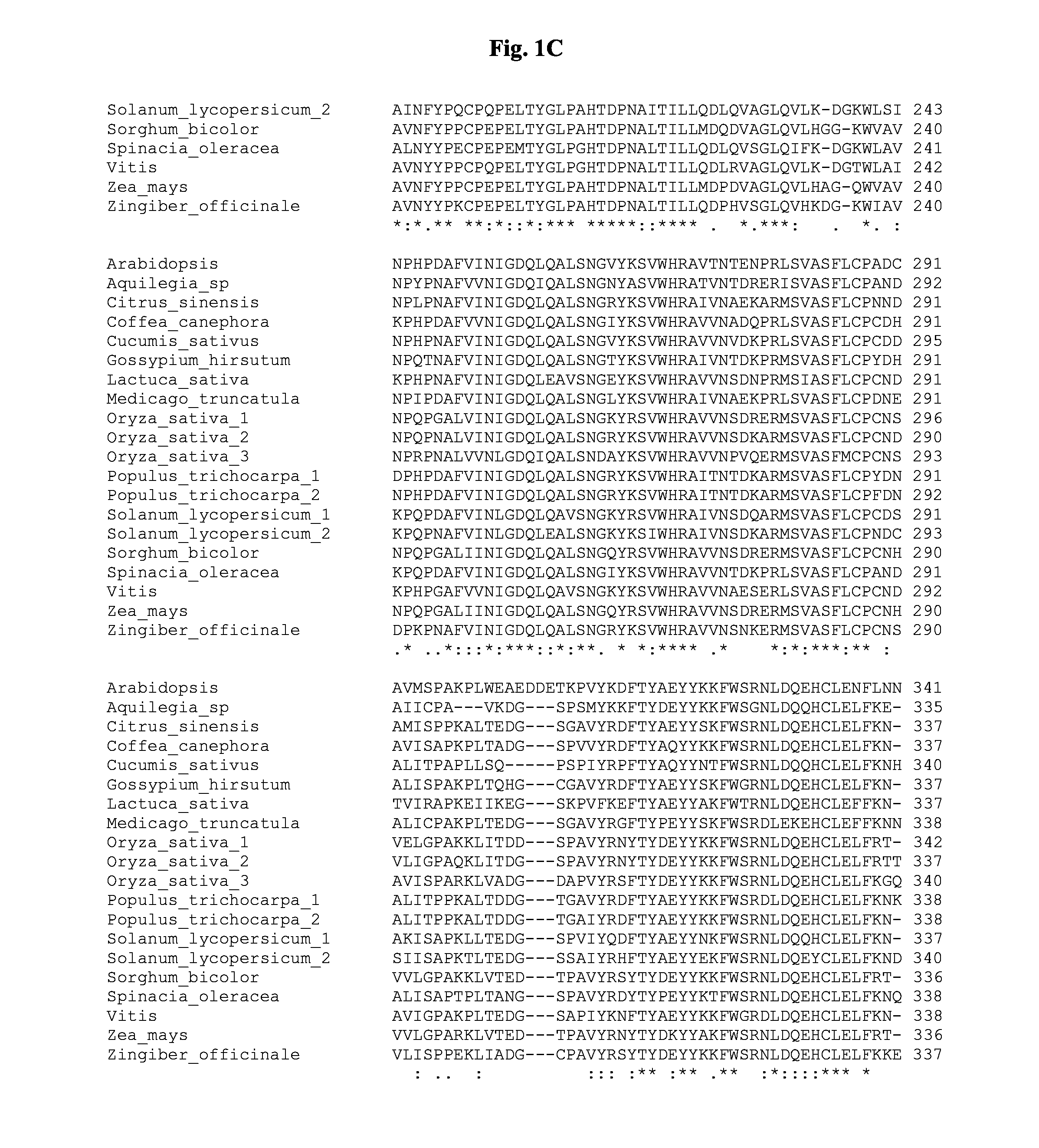Disease Resistant Potato Plants
a potato plant, disease-resistant technology, applied in the field of disease-resistant plants, can solve the problems of difficult to identify new sources of mostly monogenic dominant resistance genes, difficult to detect new sources of disease-resistant genes, and often rapid breakage of protection from diseas
- Summary
- Abstract
- Description
- Claims
- Application Information
AI Technical Summary
Benefits of technology
Problems solved by technology
Method used
Image
Examples
example 1
The Arabidopsis DMR6 (At5g24530) Gene is Required for Downy Mildew Susceptibility
Experimental Procedures
Hyaloperonospora Parasitica Growth and Infection
[0079]H. parasitica isolate Waco9 was provided by Dr. M. Aarts (WUR, Wageningen, NL) and isolate Cala2 provided by Dr. E. Holub (Warwick HRI, Wellsbourne, UK) and maintained on Arabidopsis Ws-0 and Ler, respectively. Inocula (400,000 spores per ml) were weekly transferred to 10 day old healthy seedlings (Holub, E. B. et al., Mol. Plant Microbe Interact. 7: 223-239, 1994) by use of a spray gun. Seedlings were air-dried for approximately 45 minutes and incubated under a sealed lid at 100% relative humidity in a growth chamber at 16° C. with 9 hours of light per day (100 mE / m2 / s). The sporulation levels were quantified 7 days post inoculation (dpi) by counting the number of sporangiophores per seedling, for at least 40 seedlings per tested line (FIG. 6a) or by isolating spores in water 5 dpi and determining the spore concentration to gi...
example 2
Identification of DMR6 Orthologs in Crops
1. Screening of Libraries on the Basis of Sequence Homology
[0096]The nucleotide and amino acid sequences of the DMR6 coding sequence and protein of Arabidopsis thaliana are shown in FIG. 2. Public libraries of nucleotide and amino acid sequences were compared with the sequences of FIG. 2. This comparison resulted in identification of the complete DMR6 coding sequences and predicted amino acid sequences in Aquilegia species, Citrus sinensis, Coffea canephora, Cucumis sativus, Gossypium hirsitum, Lactuca sativa, Medicago truncatula, Oryza sativa (3), Populus trichocarpa (2), Solanum lycopersicum (2), Sorghum bicolor, Spinacia oleracea, Vitis vinifera, Zea mays, and Zingiber officinale. The sequence information of the orthologous proteins thus identified is given in Table 1 and visualized in a multiple alignment in FIG. 1. For many other plant species orthologous DNA fragments could be identified by BlastX as reciprocal best hits to the Arabidop...
example 3
Mutation of Seeds
[0112]Seeds of the plant species of interest are treated with a mutagen in order to introduce random point mutations in the genome. Mutated plants are grown to produce seeds and the next generation is screened for the absence of reduction of DMR6 transcript levels or activity. This is achieved by monitoring the level of DMR6 gene expression, or by searching for nucleotide changes (mutations) by the TILLING method, by DNA sequencing, or by any other method to identify nucleotide changes. The selected plants are homozygous or are made homozygous by selfing or inter-crossing. The selected homozygous plants with absent or reduced DMR6 transcript activity are tested for increased resistance to the pathogen of interest to confirm the increased disease resistance.
PUM
| Property | Measurement | Unit |
|---|---|---|
| total volume | aaaaa | aaaaa |
| volume | aaaaa | aaaaa |
| mass | aaaaa | aaaaa |
Abstract
Description
Claims
Application Information
 Login to View More
Login to View More - R&D
- Intellectual Property
- Life Sciences
- Materials
- Tech Scout
- Unparalleled Data Quality
- Higher Quality Content
- 60% Fewer Hallucinations
Browse by: Latest US Patents, China's latest patents, Technical Efficacy Thesaurus, Application Domain, Technology Topic, Popular Technical Reports.
© 2025 PatSnap. All rights reserved.Legal|Privacy policy|Modern Slavery Act Transparency Statement|Sitemap|About US| Contact US: help@patsnap.com



